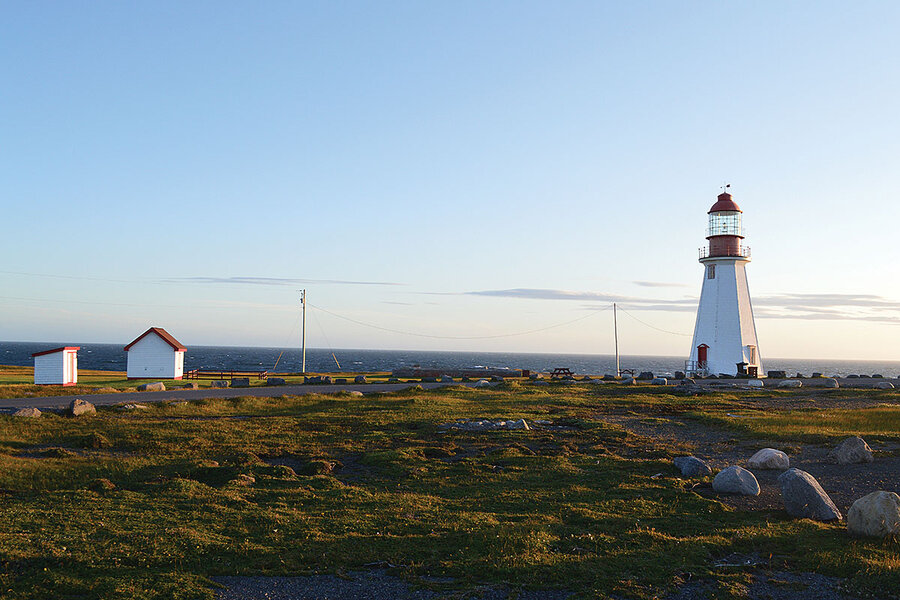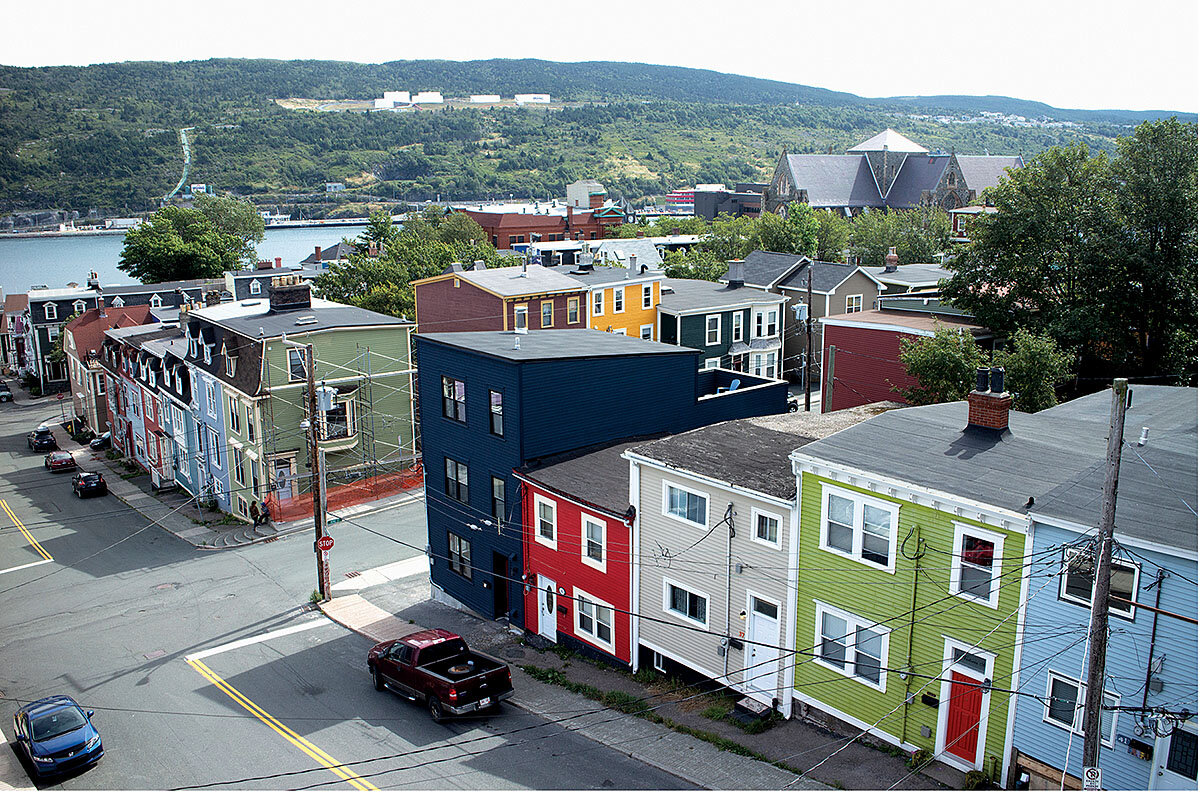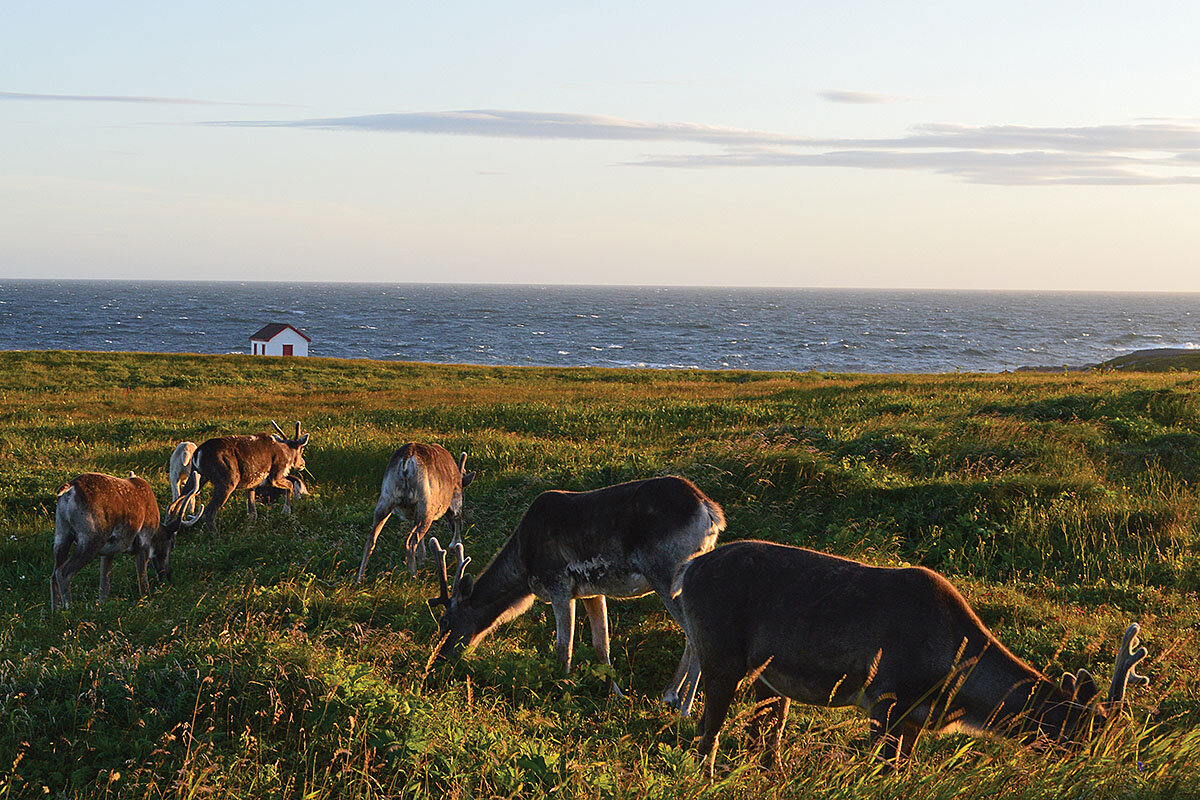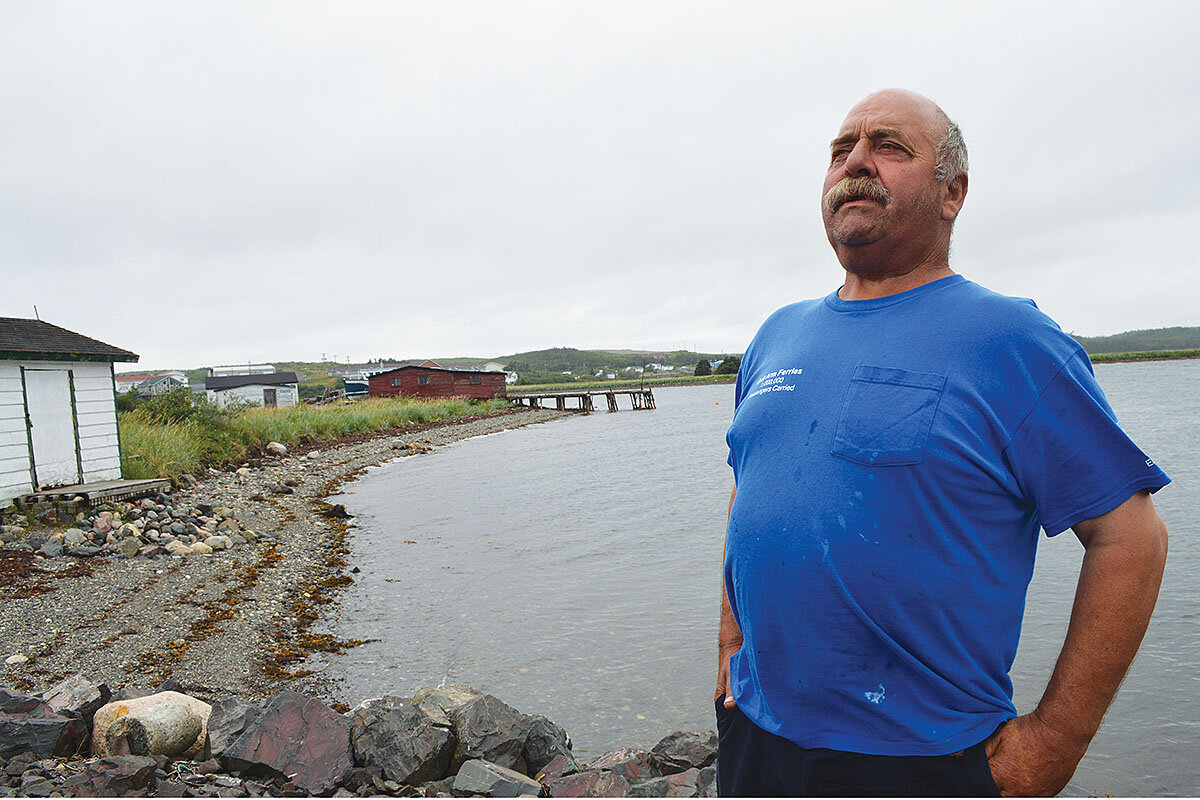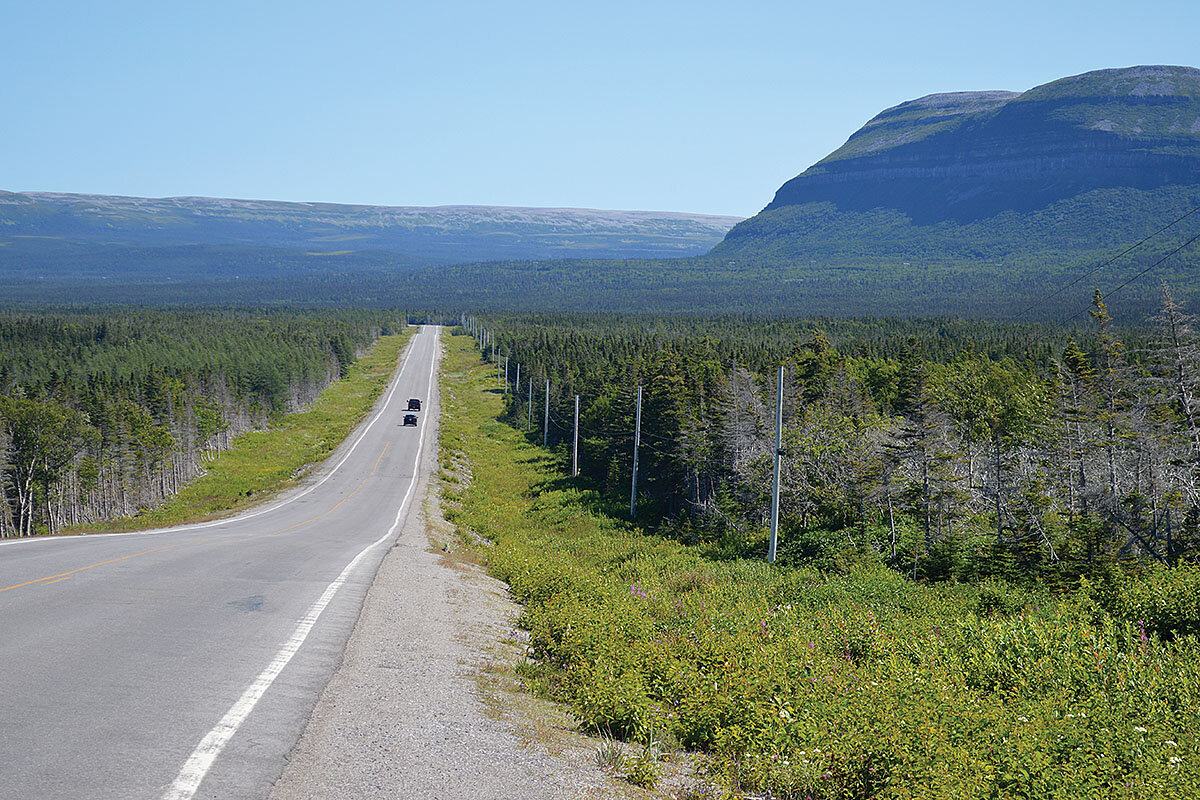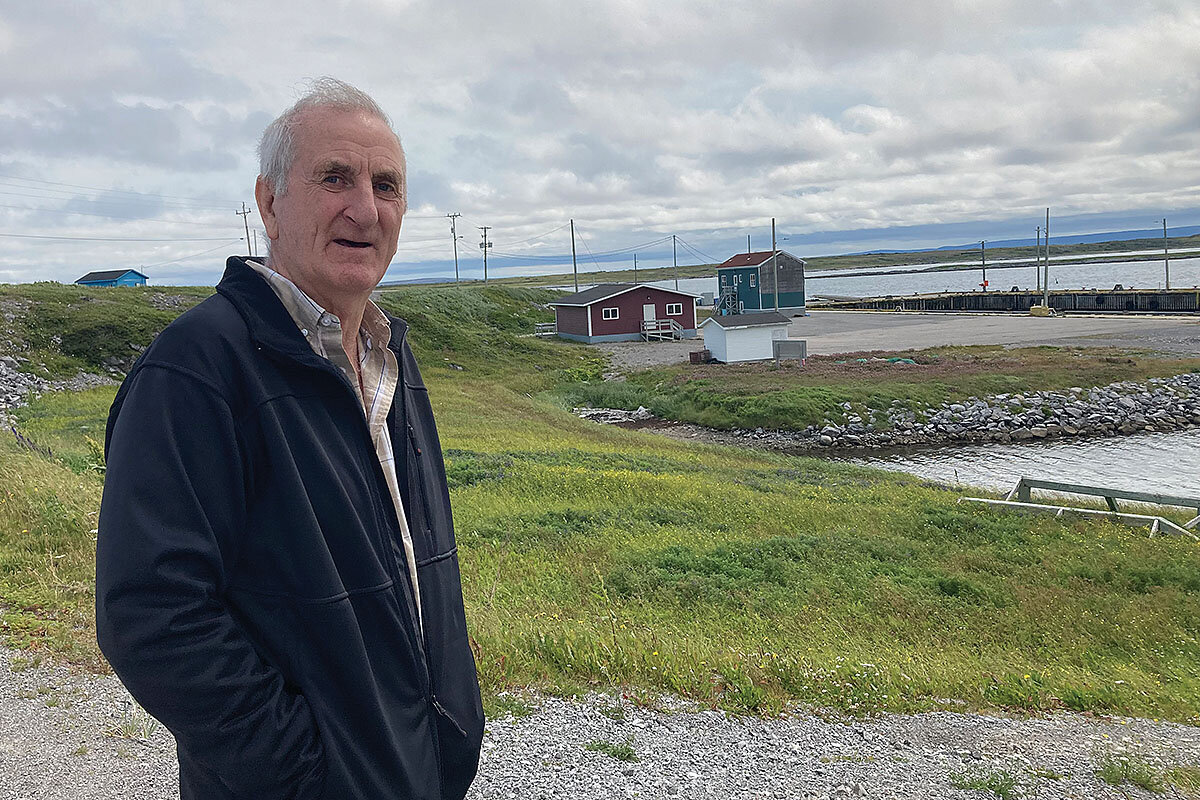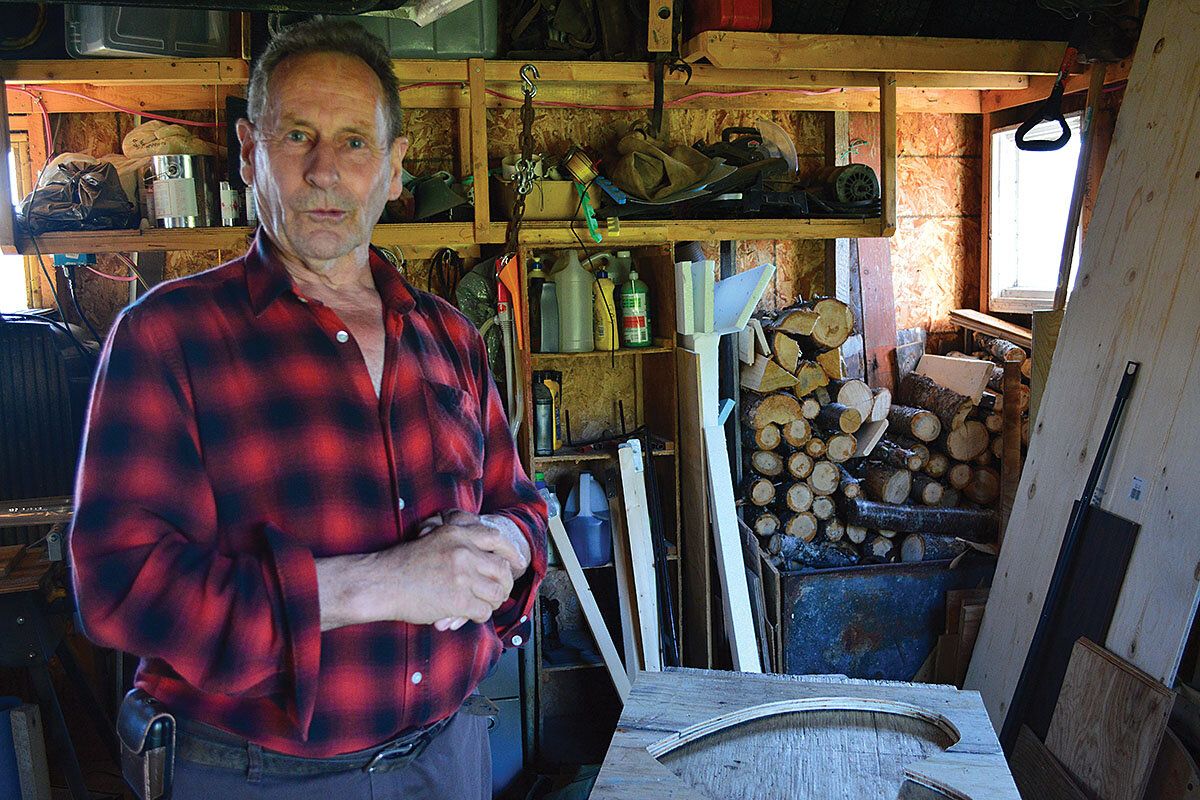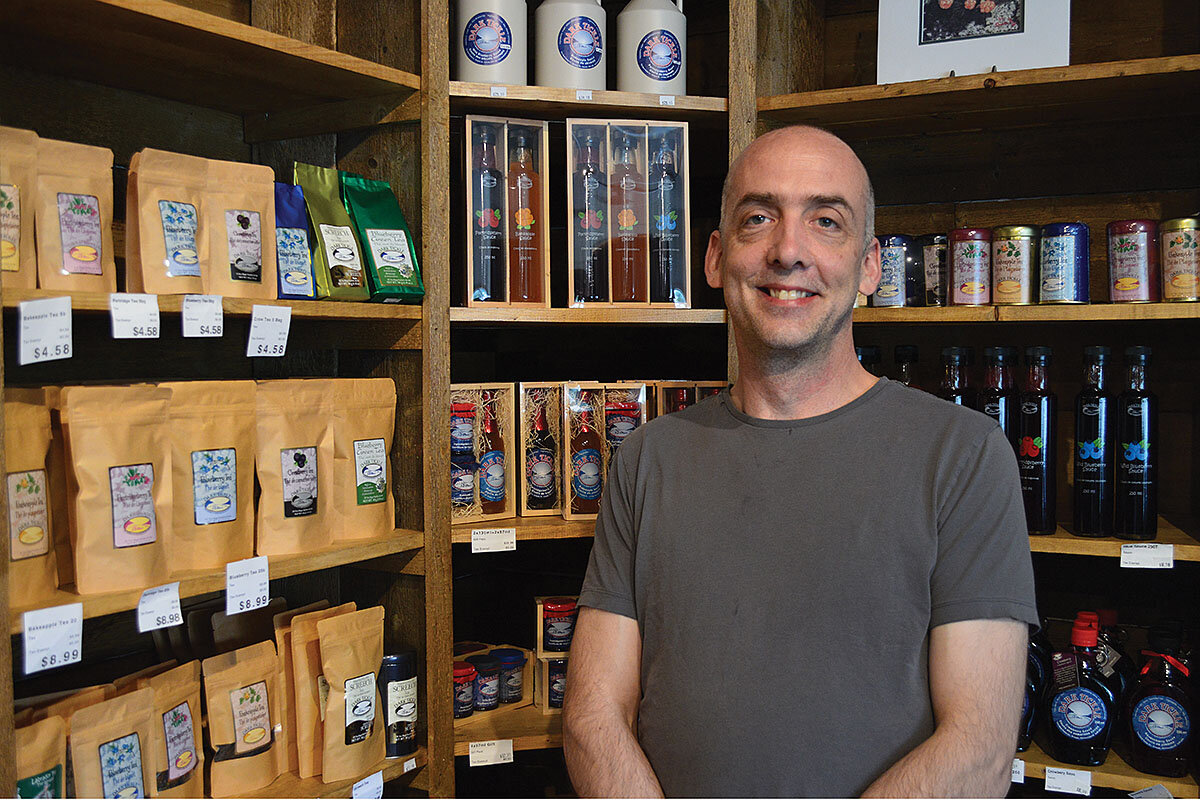Rural exodus: Newfoundland’s quest to save its community
Loading...
| Port au Choix, Newfoundland
Halfway up Route 430, on the northern tip of Newfoundland, the tiny town of Port au Choix is postcard perfect. Caribou graze at sunset at the Point Riche lighthouse, a pepper shaker-like structure that has been guiding ships through the area since the late 1800s.
Waves from the Gulf of St. Lawrence gnaw incessantly at the craggy coastline. Whales frolic in the cobalt waters, while seabirds flit in the salt winds overhead. In the town itself, barnacled shrimp boats bob in a protected harbor, and brightly colored houses cling to barrens that have witnessed 6,000 years of human history. It is a sonnet of rock and sea.
For the people who live here, self-reliance is a fact of life. Locals forage for berries and fish in the summer. They hunt moose that’s stored in freezers through the winter. No one panics if the power goes out for days – a not-infrequent occurrence.
Why We Wrote This
A story focused onA rural resilience movement is taking root in Newfoundland and Labrador aimed at stemming a population decline. It’s an effort to counter the narrative that aging communities can’t adapt and survive.
But that resourcefulness has been tested to the limits over the years. Ever since the Canadian government banned cod fishing in 1992, the story of the province of Newfoundland and Labrador has been one of out-migration, decades of locals leaving their fishing communities for high-paying jobs, often to the tar sands of Alberta. Here the population has seen a nearly 40% decline in three decades. If once there were plenty of jobs and services to support a bustling workforce, now residents accept hourslong drives for basic care and know that if a showerhead breaks, they are on their own to fix it.
“People here are good at surviving; they are not good at understanding how to thrive,” says Rachel Atkins, who lives in Port au Choix. “There has to be a cultural shift to make that happen.”
And that’s why she has joined a group of residents building a regional collective for communities that will offer a range of services, from massage and acupuncture to community kitchens and community radio. It’s an effort to draw in residents and keep others here – and counter the narrative that these aging communities don’t have the resilience to adapt. It’s a rebellion against the idea that a centuries-old way of life is destined to disappear.
“We need to stop this doom and gloom we hear about our communities dying,” says Joanie Cranston, a local leader fostering rural resilience across what’s called the Great Northern Peninsula (GNP) of Newfoundland. “That narrative gives everyone an excuse to not invest. ‘Oh well, it’s dying,’ they say. ‘Why would you invest?’ We can create strong hubs that can reach others, and keep these communities strong.”
The work the collective and other grassroots groups are doing across the GNP could hold lessons for regions around the world facing a hollowing out of populations and economies. From small towns in the American Midwest to rural parts of Europe, many places face demographic shifts that are making depopulation a pressing issue in the 21st century. The question is whether the people of this isolated but beguilingly beautiful slice of Canada have found some novel ways to combat the decline.
“We’re a canary in the coal mine when it comes to our rural areas,” says Jamie Ward, manager of the regional analytics laboratory at the Harris Centre at Memorial University of Newfoundland in St. John’s. “Rural areas everywhere are old and getting older, and struggle with out-migration. But we’re a little bit older. We’re a few years ahead. So a lot of people are watching to see how this pans out here.”
The mood across the province is what Rob Greenwood, director of the Harris Centre, describes as “very conflicted,” given how the fortunes of the region have undulated over the years.
The province was growing during the heyday of cod fishing, and after the moratorium led to a sudden exodus of workers, Newfoundland and Labrador saw another economic turnaround, with the offshore oil boom of the late 1990s and early 2000s. Then came the plunge in energy prices. The province faced deep fiscal challenges, exacerbated by mismanagement of a controversial mega-hydroelectric project at Muskrat Falls in Labrador.
Still, those in St. John’s, the quaint provincial capital, are now feeling the dynamism of a new tech boom, Dr. Greenwood says. The mining sector is thriving, too. And most Newfoundlanders appreciate the singular beauty of the land and the freedom inherent in the local lifestyle, especially those who are retired and don’t have to worry about earning a living.
And yet, the province struggles to provide services to communities along its isolated coasts as the population ages and the number of people in the workforce who can support those on the public dole shrinks. Indeed, according to federal statistics, 30% of the province’s residents will be over age 65 by 2043, the most of any Canadian province. At the same time, Newfoundland and Labrador’s fertility rate in 2019 was the lowest in the country. Within the province, the GNP is suffering the greatest demographic challenges – a 2016 study found it could lose 39% of its population by 2036.
This summer the provincial government unveiled a new $8 million (Canadian; U.S.$6.3 million) plan to attract 5,100 immigrants each year through 2026 to help increase the population.
“Our government has really put a push on [immigration] because we need to see a huge influx of people from everywhere else come here,” says Andrew Parsons, minister of industry, energy, and technology for Newfoundland and Labrador. “That’s the only way we’re going to be able to save our province.”
That might work if you live in vibrant St. John’s, with its colorful row houses pitched on rocky cliffs. It easily draws newcomers, especially since the pandemic, from international students to remote professional workers.
Take the case of Kay Naji. She decided to uproot her life in Brampton, a densely populated city outside Toronto, to move to St. John’s with her two sisters after she lost her job as a flight attendant with Air Canada. The three now own Figs & Fromage, which offers picnic charcuterie boxes. Aside from the wind, she says she loves her new life in Newfoundland.
“I really feel a huge difference in the fact that there’s a very big sense of community here, especially with the business,” she says. “We have so many people that support us so much as a local business.”
But newcomers don’t tend to settle in the rural areas that need them the most, the places where ways of life are built upon generations of a distinct kind of settlement.
The remoteness of the towns in the province is partly a quirk of history. In the 1600s, as Newfoundland was emerging as a prodigious fishing center, the British monarchy banned women from venturing to this part of the New World. It didn’t want permanent settlements taking root that could compete with its own fishing industry. It wanted to keep Newfoundland a fishing colony.
So families hid in isolated enclaves in the bays. The scattered settlements created a culture of self-sufficiency and stoicism, celebrated in song and oral history.
Over the centuries, as fishing techniques advanced, the stocks of cod and other species eventually declined. At the same time, fertility rates dropped as education levels advanced.
These twin forces have beset the province ever since it first became an official part of Canada in 1949. The first premier of Newfoundland and Labrador, Joey Smallwood, instituted a far-reaching and controversial policy to try to deal with declining rural populations and modernize the province. He relocated thousands of fishing families from remote communities to a handful of “growth centers.” The idea was to establish a few thriving cities rather than have to service hundreds of fading “outports,” as they were called.
This official “resettlement policy,” which started in the 1950s, saw 28,000 people moved from 307 communities by the time it ended in the mid-1970s, according to the Maritime History Archive. Resettlement has been so emotive that one doesn’t have to go far to find a novel or poem penned about it. (On the one evening this reporter could attend a production at the summer Rising Tide theater festival in the town of Trinity, the offering was a production of Al Pittman’s “West Moon,” a haunting story of a community’s relocation.)
Those passions remain raw to this day. Driving from the east to west coast of Newfoundland, one passes Arnold’s Cove, off the Trans-Canada Highway. Cecil Penney was 16 years old when his community of Tack’s Beach, on an island in the middle of Placentia Bay, was relocated across the water to this small town, which to his eyes seemed like a megalopolis. He worked his first job on the barges that transported entire houses – including his family’s.
In all, more than 100 homes were transported to Arnold’s Cove, says Edna Penney, a town councilor and historian, who met her husband, Cecil, after he relocated. She recalls the population tripling while she was in elementary school, from about 300 to 900. The town had to build new schools to accommodate the influx. It’s such a classic story of Newfoundland resettlement that Ms. Penney helped design a walking tour about the experience. Even though it’s been more than 50 years since Mr. Penney reluctantly left his quiet enclave, the retired fisherman still tears up when he talks about Tack’s Beach.
“It’s so peaceful,” he says. “There’s no cars, no nothing. More home is up there. It’s just the way I feel.”
Resettlement is a term that politicians no longer dare utter. But there remains an official “community relocation policy,” under which residents in small towns that have become too expensive to service can vote to relocate with a government payout. Several communities have. Two years ago, the town of Little Bay Islands, connected to the mainland via a 30-minute ferry ride, made international news as residents left the enclave in Notre Dame Bay off central Newfoundland.
And many see hints of resettlement in an economic recovery report released this year called the “The Big Reset” to address the province’s debt. A paragraph in the executive summary underscores the enormity of the challenge facing the government: “Running this sparsely populated province and maintaining its infrastructure is expensive. An abundance of government-run infrastructure is spread across significant geography, including 259 schools, over 180 health care sites, 12 ferry routes, 20 airstrips, over 9,000 kilometres of highway, 1,300 bridges, 12,000 kilometres of forest access roads, over 800 government buildings and structures, and thousands of kilometres of electricity transmission and distribution lines. All of this for a relatively small population of 522,000 people.”
For Yolande Pottie-Sherman, an associate professor in the department of geography at Memorial University, the report could lead to more cuts that make rural life untenable, such as reducing ferry services. “The reality is, if you do restructure ferry services, that’s a form of passive resettlement, even if you’re not saying, ‘This community should relocate,’” says Dr. Pottie-Sherman, who co-edited a collection of essays titled “Resettlement: Uprooting and Rebuilding Communities in Newfoundland and Labrador and Beyond.” “If you slowly remove services, you undermine people’s mobility, justice, rights, their access to be able to get around and get places. They’re not formally resettlement policies, but it’s all connected.”
The enduring resettlement talk is the inevitable outcome of demographic change. Consider, for instance, the view from Jim Larkin’s house in a town called Cook’s Harbour at the tip of the GNP. The former fisherman turns in a circle pointing out all the empty dwellings around him.
“Nobody live in that one. Nobody live in that one. Nobody live in that one,” he says. “This used to be a real busy town. After the moratorium, everything went downhill. Now she’s gone to the bottom.”
Mr. Larkin’s daughter moved away two years ago to St. Anthony because her son was the only teenager in the town, and she wanted him to be around friends. If relocation came up for a vote, Mr. Larkin says, he wouldn’t hesitate to move. “This community is pretty well finished.”
Carolyn Lavers in Port au Choix understands that sentiment – her son has left for a job as an electrician in Alberta – but she refuses to accept that leaving is the answer. In the 1980s, she was working as a hairdresser in Toronto when she decided to set up a bakery as a side business to help her mother in Port au Choix. Within a few years they were baking bread for all the fishing fleets in town, so she moved home to expand the business. Then the moratorium hit three years later. “Oh, Lord, have mercy. It’s like Pluto and Earth,” says Ms. Lavers of the town before and after the suspension.
She still runs the bakery, but it is now open only one day a week. Out of that slowdown, though, has come another epiphany. A friend of Ms. Lavers’, Ms. Cranston, the rural resilience leader, asked if she could use the washing machine at Ms. Lavers’ house, where the bakery is located, on a day when the business was closed. Ms. Cranston, a physiotherapist, regularly travels to see patients and wanted to use it to launder sheets. This led to another idea: Why not open a place where all kinds of social services could be provided under one roof?
Ms. Cranston had already started a similar center in Norris Point. Called the Old Cottage Hospital, it houses wellness services, performance art space, a public library, community radio station, a greenhouse, and a hostel in a former rural hospital.
It is now part of the Great Northern Peninsula Research Collective, an academic-community partnership designed to foster development across the region. The collective is trying to create community hubs in heritage spaces – places that are historic anchors in towns, says Ms. Cranston.
In Port au Choix, the group recently purchased an empty building facing the town’s harbor that was once a teen hangout called “the parlor.” They plan to turn it into the GNP Community Place, which will offer massage, physiotherapy, and space for a community kitchen and events. The center will be linked to one under development in St. Anthony, which Mr. Larkin and his neighbors in Cook’s Harbour can access.
Kelly Vodden, who supports projects in rural resilience at Memorial University’s Grenfell campus, says that fishing, mostly shrimp and crab, remains integral to the area but only employs a fraction of the people it once did. (Unemployment in Port au Choix and the surrounding area stands at 38%.) Many efforts are underway to boost long-term sustainability, such as fish cooperatives and community gardens. Fishing families have also pivoted to other jobs, such as giving tours of Viking settlements and icebergs and running whale-watching trips.
Adaptability has been key to the region’s resilience. The owners of the Dark Tickle Co., at the northern tip of the peninsula, used to run a fishing supply shop. After the moratorium, and struggling to survive, they noticed that tourists heading to the nearby Viking settlement L’Anse aux Meadows began asking about local wild berries, such as partridge and bakeapple. Today the company sells wild-berry teas, vinegars, and jams across the province. “I went from working on a fish wharf to working in a jam kitchen,” says Kier Knudsen, who spent summers working at his grandfather’s original store.
He was drawn back to Newfoundland from a job in aerospace engineering in Oregon because he missed the “way of life.” Ms. Atkins moved back home from a job in corporate strategy in Toronto amid the pandemic. Many see new opportunities in this region, as people get more comfortable living in isolated places and commuting to work by computer. But before any towns can move forward, they will first have to revive a spirit of community, says Renee Pilgrim, who moved back to the St. Anthony area from Toronto last year, too. The founder of GNP Health & Wellness, she aims to connect it to the wellness network and offer acupuncture, yoga, and a meeting place for teens and elders across the region.
“The demographic problems are not going to be solved by having space for yoga,” she says. “But for those who need emotional and community support, having the space helps people feel less isolated, less alone.” When she was growing up, residents gathered regularly at the local hall or in fish storage sheds on the community wharf. But over time, technology and a hollowing out of public spaces have eroded a sense of fraternity. “These little communities and the lifestyle here is dying out,” says Ms. Pilgrim. “The relationship with the land, the sense of community and working together, people are becoming more independent and less community-focused.”
Jeff Webb, a cultural historian at Memorial University, says there is a lot of nostalgia for rural Newfoundland and its self-reliant way of life. But change is inevitable. “It’s going to transform into something else. That’s not something I regret; that is something that happens,” he says. “[These towns] could become retirement communities. Some might ... rely heavily on tourism. Some might evolve into something else, but it’s going to change. It’s natural and inevitable.”
Ms. Lavers, the bakery owner, thinks the change must, above all, come from within. Her town isn’t going to return to boom times, but she believes rural Newfoundland has a chance to grow if mindsets shift and small efforts like the GNP Community Place move forward. Already more locals have been congregating in her bakery after Ms. Atkins, her goddaughter, began a pop-up cafe once a week that offers espresso-based drinks and chia pudding.
“To survive in a rural region, you really must have a community helping one another and volunteering,” she says. “And I think it will happen, because at the end of the day, as much as a lot of our people go away, we never stay away with a good heart. The plan is always to go back home.”




